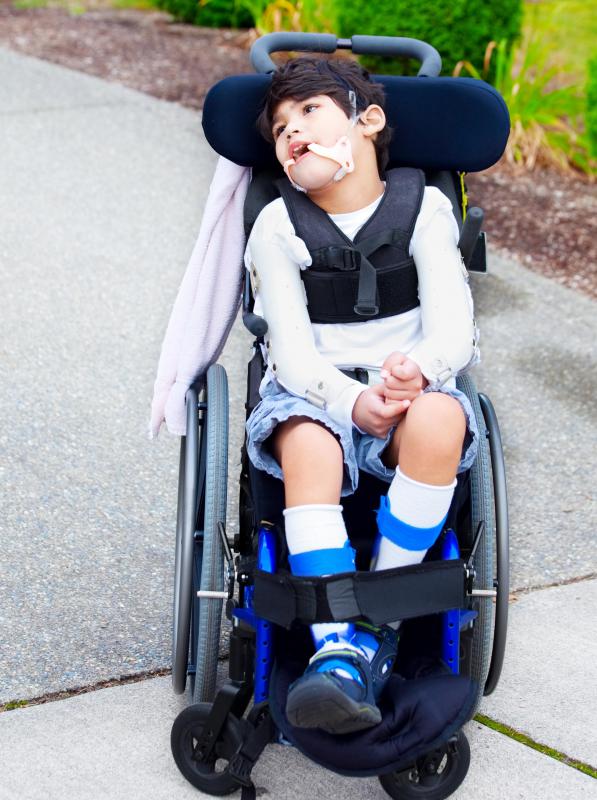At TheHealthBoard, we're committed to delivering accurate, trustworthy information. Our expert-authored content is rigorously fact-checked and sourced from credible authorities. Discover how we uphold the highest standards in providing you with reliable knowledge.
What is Cerebral Palsy?
Cerebral palsy is a general term used to describe any number of medical conditions in which an infant cannot control muscle movement. This problem can usually be diagnosed by the time a child reaches 18 months due to the child being unable to perform the standard motor skills associated with growing infants, such as sitting, reaching for toys, and walking. The conditions do not generally deteriorate with the passing of the years; rather, they limit the activities a child can perform.
While many infants worldwide are born with cerebral palsy every year, medical professionals and researchers alike do not know the genetic factors that may lead to this condition. While some researchers believe that it can be present due to genetics, other research indicates that it can be the effect of babies born to alcoholic or drug addicted mothers. Moreover, if a problem during the child's birth prevents the flow of oxygen to the brain, cerebral palsy can be a likely result.

Research indicates that this condition comes in many different forms. Spasticity is the term given to individuals who are unable to control their muscle movement. Someone afflicted with hemiplegia cannot control the muscles of an arm and a leg on the same side of the body. Quadriplegiacs have difficulty controlling and using all four limbs. Individuals who have this problem can exhibit a wide range of differences: one may have motor control issues that are hardly noticeable while another may suffer from extreme disabilities that may, for instance, inhibit the way they walk or use their hands to eat.

There is no known cure for the many types of cerebral palsy. Medical professionals have designed a number of physical therapy programs to massage and relax the muscles of palsy victims. Lawyers have brought in a number of huge personal injury verdicts representing these patients when they are able to demonstrate that the condition was a result of the negligence on the part of healthcare professionals during the birthing process.
AS FEATURED ON:
AS FEATURED ON:



















Discussion Comments
Cerebral palsy is a disorder. It may be genetic, also. Cerebral palsy can usually be diagnosed by the time a child reaches 18 months. Children with this disease are not able to walk properly and even sometimes are not able to move their body parts.
Tessam: CP is not genetic; it is generally due to either the prenatal environment, or sometimes injury during birth or in the very early part of life.
For example, a child born very prematurely may end up with CP, or a child whose mother did not get enough to eat during her pregnancy might get it. I have a friend who had a stroke (the sort where you bleed into your brain) at the age of two, who has CP due to the stroke; but her case is in the minority -- most cases start before, or at latest during, birth.
where could I find information on the genetic factor of CP?
Post your comments